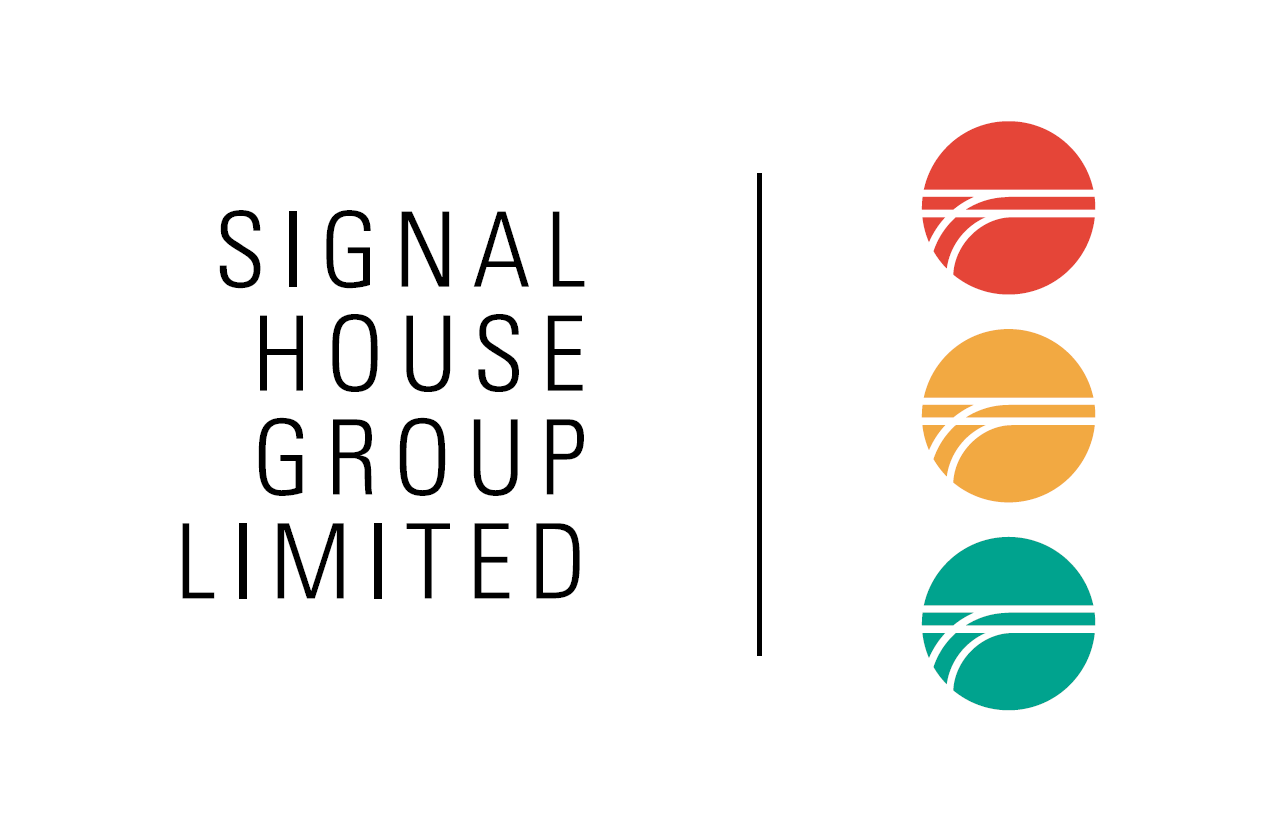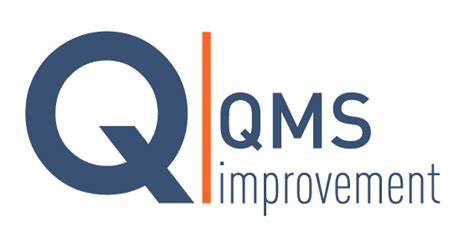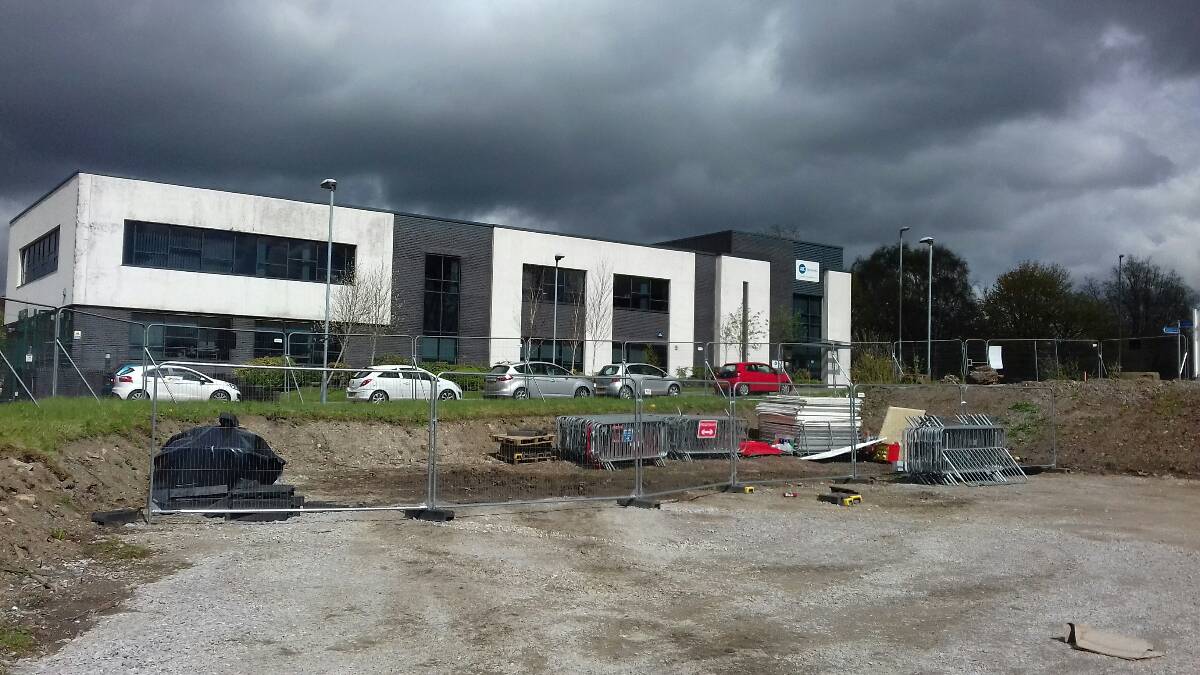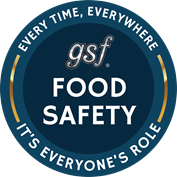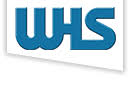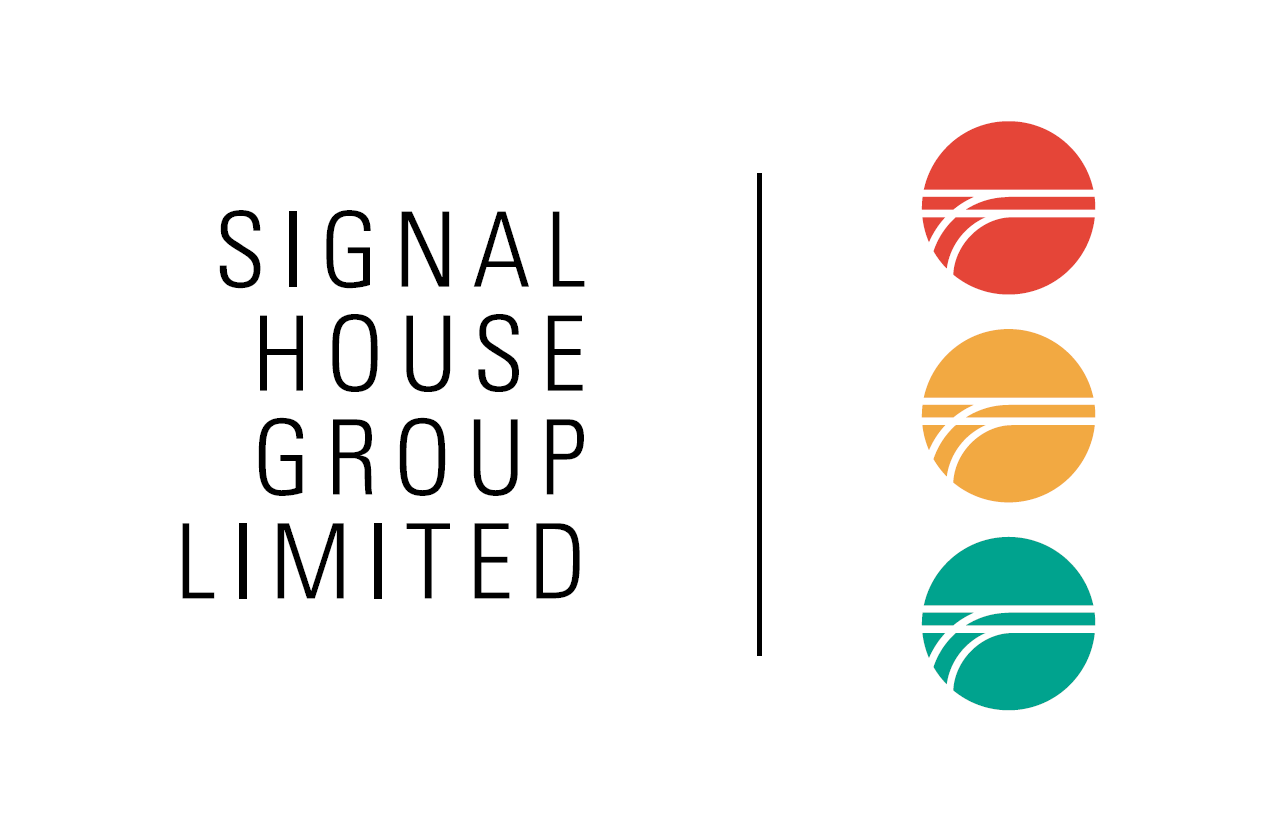Information
-
Audit Title
-
Document No.
-
Site
-
Project Manager
-
Location
-
Conducted on
-
Prepared by
-
Additional informations
Previous Audit Report
-
Has the previous audit report been closed out?
-
Have all previous major issues been cleared?
Safety, Health and Environmental Management Element
-
Has a Job Safety Analysis been done for on-going activities?
-
Has the last review of Job Safety Analysis been conducted in the last 3 years?
-
Have preventive and control measures been implemented or scheduled after the Job Safety Analysis?
-
Does the representative commit with the local regulation?<br>
-
Does the representative apply safety objectives and programs, in compliance with DCNS?
-
Does the representative review at regular and planned intervals the safety programme?
-
Has an incentive system been settled in the worplace (Rewards)?
-
Has a disincentive system been settled in the worksite (penaltie system)?
-
Are toolboxes performed in the workplace ?
-
Are any safety campaign (poster, exhibition, competition) organized in the premises ?
-
Has a Vessel Safety Coordination Committee (VSCC) been established in the worksite ?
-
Is the Vessel Safety Coordination Committee efficient ?
-
Do Safety signs and labels display efficiently within the worksite?
-
Does the representative perform control of contractors ?
Safety Training
-
Has work in height training been done for employees in the workplace ?
-
Has confined space training been done for employees in the workplace ?
-
Has preventives measures against arc flash training (H0B0) been done for employees in the workplace ?
-
Has Low voltage electrician staff training been done for electrical team members ?
-
Has hoist and lifting training been done for employees involved (chain-block, slinging) ?
-
Has overhead crane training been done for employees involved ?
-
Have all training been recorded with evidences?
Document and Data Control
-
Is there all legal register in accordance with local policy?
-
Are medical and health records available?
-
Is safety management review available?
Permit to work system
-
Is there a permit to work system?
-
Have employees been trained on the permit to work system ?
-
Is there any internal control regarding the efficiency of the system ?
-
Is the system efficient ?
Abrasive Blasting
-
Are blasting fixtures used safely ?
Air hoses and compressed air
-
Is a securing system (whip-check, safety pins, quick coupling) used over the hose connections ?
Air-operated equipment
-
Ensure pneumatic power tools are in good condition?
-
Ensure power tools are not used with a locked-on position?
Access and Egress
-
Is there safe access and egress to all working areas of the site?
-
Have pedestrian walkways been provided to protect them from moving vehicles?
-
Are walkways free from obstructions and stored materials?
-
Are access routes adequatelly lit?
Access - External
-
Ensure site access points are clearly signposted on the approaches to the site.
-
Ensure adequate on-site signage is provided to warn and advise both vehicle drivers and pedestrians.
-
Ensure that adequate lighting is provided, including flashing amber warning beacons where appropriate.
-
Ensure any floodlights do not dazzle drivers on the site or on adjacent public/private roads.
-
Ensure that there is always a clear access route to and from all parts of the site.
-
Ensure the site is securely fenced at all times to prevent unauthorised access.
Asbestos Management
-
Has an asbestos survey been carried out?
-
Has a detailed risk assessment and method statement been carried out?
-
Have the results of the survey been communicated to relevant parties?
-
Have enclosures been tested?
-
Have positive pressure units been tested?
-
Are air testing results in place?
-
Are waste consignment notes in place?
-
Is the removal company licenced?
-
Are medical certificates of the persons doing the work in date?
-
Is the work being carried out in a controlled and safe manner?
-
Has the asbestos been disposed off in accordance with the special waste regulations ?
-
Are emergency procedures in place for inadvertent exposure?
-
Is the presence of asbestos included in the site induction?
Batteries
-
Have workers been trained to work safely on batteries ?
-
Do they use non-conductive tools in safe condition ?
Barricade, Flagging and Signage
-
Ensure all ground level barricade devices are at least 1 meter in height?
-
Ensure, when hazard is no longer, that all flagging tape is removed?
-
Does all hazard label efficiently?
Compressed Gasses (e.g. LPG, Acetylene)
-
Are they kept away from flammable liquids?
-
Are the properly stored in a purpose made cage?
-
Are gasses segregated by type?
-
Is the cylinder valves fully closed when not in use?
-
Do all lines have anti-flashback arresters fitted?
-
Do all line connections only have approved fittings and clips, with no Jubilee clips?
Consultation
-
Has a system been established for employees to comment and be consulted on health, safety and welfare issues.
-
Is there a site suggestion box?
-
Is there a safety joint committee / forum ?
-
Are minutes and actions from meeting available and published on site?
-
Ensure appropriate Tool Box Talks are given to all employees and that the Tool Box Talks are appropriate and relevant to the work being undertaken.
-
Ensure that an attendance register has been maintained and signed by all persons present at each Tool Box Talk.
Confined Spaces
-
Confined Spaces include manholes, shafts, pits/tanks, pipes/culverts, certain excavations, silo's and other confined/enclosed spaces.
-
All work in confined spaces should be subject to a specific risk assessment and be carried out in accordance with Permit to Work/Enter and a safe system of work.
-
Only appropriately trained and qualified persons who have undergone an accredited confined spaces entry course shall be permitted to enter a confined space, and only then if the correct checks have been made and the correct safety equipment (breathing apparatus, gas detection equipment, emergency escape equipment etc) are used.
-
Is there a risk assessment for the confined spaces work?
-
Is there efficient ventilation?
-
Do workers wear single gas detector in confined space?
-
Have workers been trained as confined space entry?
-
Ensure all confined space permits have been checked, are valid and being strictly enforced.
-
Controls should include atmospheric monitoring, emergency escape arrangements, adequate supervision (i.e.: a watchman outside of the confined space), method of raising the alarm and safe access/egress etc.
-
Check permits are closed and cancelled upon completion of the works.
-
Does a record of entry (tally box) been used?
Control of Substances Hazardous to Health (COSSH)
-
Have COSSH Assessments been carried out for all potentially hazardous materials and substances being used on the site.
-
Are material safety data sheets available to assist with COSHH assessments.
-
Have the hazards associated with the use of such materials been properly communicated to those affected.
-
Are alternative safer substances available which can be used as substitutes.
-
Ensure all dangerous/hazardous materials/Substances are clearly marked/identified and stored in a secure location appropriate to the substance.
-
Have the appropriate control systems and PPE been provided and is the PPE being used.
Demolition Operations
-
Has a competent person been appointed to oversee the demolition operations?
-
Has the structural stability been checked and are temporary supports in place where required?
-
Are any temporary works designed required?
-
Have all services been disconnected?
-
Is the area barried off and suitably signs in place.?
-
Is there adequate dust suppression where required?
-
Is there suitable noise controls in place?
-
Is there suitable lighting?
-
Is material being removed from site on a regular basis and not allowed to accumulate?
-
Are all demolition operatives adiquitly trained, supervised and instructed?
Diving
-
Ensure divers are trained for the job on-going?
-
Ensure divers are trained for rescue, and all equipments available (oxygen therapy, ELCB, sea snake / jelly fish antivenom)?
-
Ensure a diving check list control is used by divers before proceed (lockout movable parts, shut down underwater transmission, no refueling)?
Electrical Equipment
-
Check that all necessary utility services are provided on site before work begins.
-
Ensure that existing services e.g.: electricity cables, gas mains etc have been identified and effective steps have been taken to prevent danger from them.
-
Check that low voltage tools and equipment are being used wherever possible.
-
Check that cables and leads are protected from damage.
-
Check all connections are properly made and suitable plugs are used.
-
Check that tools and equipment are visually checked and regularly inspected/tested by a competent person. (PAT)
-
Ensure that cables and trailing leads are not trip hazards.
-
Check that all temporary supplies are effectively bonded to Earth.
-
Ensure that suitable and sufficient task lighting is provided to enable operatives to safely carry out their work.
Environmental Management
-
Environmental Emergency
-
Is an Emergency Plan in place?
-
Evidence of ongoing review?
-
Is it communicated via induction?
-
Is it tried and tested?
-
Water pollution control
-
Are all wastewater treated before discharge into the sewer?
-
Is there a emergency plan in case of chemical leakage in water?
-
General Waste Disposal for hazardous substances
-
Is waste properly disposed in accordance with local regulation?
-
Is there a designated chemical waste area with spill pallets?
-
Environmental Registers
-
Is the environmental register up to date and relevant?
-
Spill Response
-
Are spill kits available?
-
Located in the correct areas?
-
Staff and operatives aware of their location?
-
Have emergency drills taken place?
-
Is their location communicated via induction?
-
Are the contents regulary checked?
-
Working on or near water
-
Are appropriate pollution prevention measures in place and adequate?
-
Are soil heaps located away from rivers/streams?
Equipment and piping isolation
-
Is there a clear lockout/tagout process to isolate pipes, tanks?
-
Is a record of blinds keep with all data (location, size, operator)?
Equipment guarding
-
Have guards on portable tools been in place and in good condition?
Excavations/Earthworks
-
Ensure that checks are made to determine the presence of any buried services before and during all excavation works.
-
All excavations should be carried out in accordance with a detailed method statement and permit to dig. Is there a permit to dig?
-
Check that there is adequate support and propping for the excavation, or whether it has been sloped or battered back to a safe angle.
-
Check that there is a safe method used for placing supports, without the need for operatives to work in an unsupported trench.
-
Check that there is safe access into the excavation (i.e.: a sufficiently long and secured ladder).
-
Check that barriers or other protection to stop people/vehicles falling in are in place.
-
Does the excavation affect the stability of neighbouring structures or services.
-
Ensure that materials, spoil and plant is stored away from the edge of the excavation to reduce the chance of collapse.
-
Ensure that the excavation is regularly inspected by a competent person and that a record of such inspections is maintained.
Eyewash stations
-
Is there sufficient eyewash station in the premise?
-
Are the eyewash stations clean and up to date?
-
Ensure regular correct functioning are performed?
Extension cords / Cheater cords
-
Are extension cords used for temporary situation only?
-
Are extension cords in good condition (not frayed, taped or damaged)?
Fire Risks and Management
-
Is there a fire risk assessment in place?
-
Ensure there are emergency procedures for evacuating the site in case of a fire, flood, explosion etc.
-
Ensure all staff know what these procedures are and that they form part of the site induction.
-
Check that there is an adequate means of raising the alarm, and that it is regularly tested.
-
Check that the emergency services have been informed of the location of the works, the key hazards and the emergency procedures.
-
Ensure that there are adequate escape routes and that these are kept clear of obstructions.
-
Ensure that the quantity of flammable materials, liquids and gases are kept to a minimum and are adequately stored.
-
Ensure that smoking and other ignition sources are banned in areas where gases or flammable liquids are stored or used.
-
Check that flammable and combustible waste is removed regularly and stored in suitable bins and skips.
-
Check that suitable fire extinguishers are provided and that they are maintained and in a good condition.
-
Check that all fire extinguishers have had an annual inspection.
First Aid
-
An appropriate number of trained and qualified first aiders should be available on the site.
-
Check the number of first aiders required, this is dependent on the type of work or operations, the number of workers on site and any special or unusual hazards.
-
Ensure all first aiders are clearly identified on site through the use of an appropriate helmet sticker or other efficicient identification.
-
Ensure the first aid kit contains only first aid materials et equipments up to date?.
-
Ensure the location of first aid boxes is clearly posted?
-
Ensure first aid box is checked and replenished on a regular basis.
-
Are new staff made aware of its location as part of their induction?
Gas Detector
-
Ensure only trained persons are using gas detector to monitor the atmosphere?
-
Ensure all gas detectors have been calibrated ?
Housekeeping
-
Ensure all debris and waste is removed from the work area upon completion of the work or at the end of each shift.
-
Ensure staff adopt the philosophy of 'A tidy site is a safe site'.
-
Ensure materials are stored in an appropriate manner so as not to cause damage to or a weakening of the material.
-
Are damaged materials segregate to prevent them being used?
-
Are All pipes and tubes etc securely wedged or choked to prevent accidental movement?
-
Are All hazardous/flammable liquids contained within a bundled area/tank?
-
Ensure all waste receptacles are appropriately signed for their intended contents.
Health & Safety Management Plan / Safety Protocol
-
Ensure the project management plan / safety protocol is up to date and signed by all relevant parties.
-
Is an emergency plan defined and in place complete with emergency contact numbers?
-
Is the plan meaningful and communicated to all parties, including sub contractors?
-
Are responsibilities defined?
Hot work
-
Ensure fire watchers are trained?
-
Ensure a gas monitoring is done before hot work on board?
-
Are all equipments in efficient condition (fire blanket, thermal camera, ventilation)?
-
Is there a ventilation to clear the atmosphere?
-
Does the fire watcher stay at least 30 minutes after the end of hot work?
Induction
-
Ensure all staff receive a site specific safety induction before starting work.
-
Ensure all staff who have been inducted display an induction sticker on their safety helmet or wear a photo identification badge.
-
Ensure the safety induction firstborn process is regularly reviewed and updated to take account of changes in site conditions etc.
-
Are all visitors including the client representatives being inducted?
-
Are site safety inductions being adequately carried out both for staff and visitors?
Lasers
-
Is there a risk assessment in place for the use of lasers?
-
Are operators trained and competent?
-
Are areas where lasers are used defined and clearly marked?
-
Is the correct eye protection being used?
-
Are the beams away from other workers, public areas and roads?
Life jacket
-
Do people working near water wear life jacket?
-
Ensure all life jackets are in good condition and efficient?
Lifting Operations/Equipment
-
Ensure a (competent) Appointed Person co-ordinates all lifting operations.
-
Have all lifting operation got a valid lifting plan?
-
Ensure that all lifting equipment has been tested and installed by a competent person and is regularly maintained and inspected.
-
Check that the operators are trained and competent.
-
Check that the rated capacity/safe working load is clearly marked.
-
Ensure a signalman is identified?
-
Ensure that the lifting equipment is capable of lifting the heaviest component within the anticipated working radius - allow for sufficient spare capacity.
-
Ensure that cranes and other lifting equipment has sufficient space to operate safely.
-
All lifting equipment should have a thorough examination every 6 months.
-
Ensure lifting operations do not take place near overhead power lines and excavations.
Lightning
-
Ensure safety standards are applied in the premises (30-30 rules for example. If you count less than 30 seconds between lightning flash and thunder bang, stop work for 30 minutes)
Lockout / Tagout (LOTO) Process
-
Ensure LOTO process is settled in the workplace?
-
Is there any padlock used for locking devices?
-
Is there a specific follow up for LOTO process?
Lone Working / Out of hours working
-
Is the work defined as low risk?
-
Is there a risk assessment for lone working?
-
Is access to first aid, welfare facilities and emergency services available to the worker/s?
-
Has the work been approved by a top manager?
Manual Handling
-
Check the suitability of using wheelbarrows, hoists, telehandlers, trolleys and other plant or machinery so that manual handling of heavy objects is kept to a minimum.
-
Avoid the repetitive laying of heavy equipments weighing more than 20KG.
-
Ensure all staff have received manual training.
Mobile Scaffold Towers
-
Check that proprietary tower scaffolds have been erected and are being used in accordance with the suppliers instructions.
-
Check that the wheels of any tower scaffold have been locked when in use and check that the platform is empty when being moved.
-
Are they tagged safe for use?
Noise, Vibration and Associated Health Risks
-
Vibration can generate Hand-Arm Vibration Syndrome (HAVS). The development of HAVS is gradual and increases in severity over time. It may take a few months to several years for the symptoms of HAVS to become clinically noticeable.
-
Check that workers have had information and training so that they know what the risks are from vibration hazards.
-
Check that exposure to vibration hazards has been reduced as much as possible by selecting suitable work methods and Plant.
-
Ensure reduced-vibration tools are used wherever possible.
-
Check vibration tools are properly maintained.
-
Check whether health surveillance for people exposed to high levels of hand-arm vibration over long periods is in place.
-
Limit the exposure of persons to vibration hazard by ensuring that no person uses vibrating tools for longer than the manufactures guided times.
-
Noise - As a general rule, if you: - have to shout to be heard at a distance of 2m, the noise level is approx 85dB and you should consider wearing hearing protection.
-
- have to shout to be heard at a distance of 1m, the noise level is approx 90dB and you should definitely wear hearing protection.
-
Ensure that workers have had training so they are aware of the risks from noise on site and what they need to do to avoid these risks.
-
Check whether the noise can be reduced by using different working methods or selecting quieter plant e.g.: by fitting breakers and other plant or machinery with silencers.
-
Ensure that people not involved in the work are kept away from the source of the noise.
Non Ionizing Radiation
-
Have electromagnetic fields been assessed?
-
Ensure all electromagnetic sources have a specific restricted area (measurement done par calculation or monitoring)?
-
Ensure workers are trained?
-
Is there any Personal Monitors available to detect any leak on waveguide?
Personal Protective Equipment (PPE)
-
PPE General Requirements - Ensure PPE compatibility issues have been considered and that one piece of PPE not restrict the effectiveness of another piece of PPE.
-
Ensure that PPE is issued on an individual basis.
-
Ensure that it is suitable for the type of work being undertaken.
-
Check that the PPE is marked with the genuine 'CE' mark to help identify type of protection.
-
Check that it is kept in good condition.
-
Ensure that it is appropriately replaced.
-
Ensure all visitors are wearing Hi-Viz vests or jackets.
-
Eye Protection
-
Ensure that it is of a suitable grade for the type of work being undertaken. I.e. light protection or full goggle etc.
-
Check that it is kept in good condition.
-
Foot Protection
-
Ensure that footwear is manufactured to CE standards.
-
Ensure that footwear is fitted with steel toecaps and steel sole plates.
-
Hand Protection - Ensure that where damaged to the hands may occur through activities such as handling, or when using hazardous substances/chemicals that all persons affected wear the appropriate class of safety glove.
-
Are all gloves free from damage and used?
-
Ensure gloves are the correct size.
-
Ensure gloves are correct for their application and the activity being undertaken.
-
Check that hands are washed frequently after spells of work.
-
Check the availability of barrier creams and skin cleansers.
-
Hearing Protection
-
Ensure the correct type of protection is in use for the task.
-
Ensure that hearing protection is used as instructed.
-
Where ear plugs are in use ensure the correct size ear plugs are being worn.
-
Ensure that hearing protection is kept clean and checked regularly for damage.
-
Ensure Areas which are mandatory hearing protection zones are signed as such using the appropriate signs.
-
Respiratory Protection (RPE)
-
Ensure that the correct type of respiratory equipment is used for the works being undertaken.
-
Ensure that persons are trained for the use of the RPE and where applicable have a face fit test to ensure the effectiveness of the RPE.
-
Ensure that all equipment is cleaned and checked after use.
-
Safety Helmets
-
Ensure all staff and visitors are wearing safety helmets.
-
Were all helmets found free from damage?
-
Ensure helmets are worn correctly.
-
Were helmets within their expiry date - helmets should be changed every 2-3 years.
Plant & Equipment
-
Ensure that tools and equipments are stored correctly to avoid damage to the equipment and persons.
-
Dry, covered and secure storage areas should be provided for all tools and equipment.
-
Hand tools
-
Ensure that the right tools and equipment are being used for the right job.
-
Were all hand tools found to be in good condition with no defects?
-
Power Tools
-
Ensure operatives have been trained to use the tools/equipment they are using.
-
Check that all dangerous parts are guarded e.g. gears, chain, drives, projecting engine shafts etc.
-
Check that guards are secure and in good repair.
-
Ensure that the tools are in a good state of repair and carries appropriate safety symbol e.g. BS kite mark, CE Mark etc.
-
Check that safety devices are operating properly and that all cables are double insulated.
-
Ensure that the plug is of the correct type, undamaged and securely clamped to the cable.
-
Check the supply cable for cuts, splits or other damage. All all cables free from damage?
-
Ensure all Plant and Machinery is inspected on a quaterly basis by a competent person and recorded in a Plant Inspection Register.
Radioactive Materials and Equipments / Radioactive Inspection
-
Ensure radioactive equipments are store in a suitable location (dedicated room locked, safe box)?
-
Ensure workers are trained?
-
Is there a written procedure prior performing radioactive inspection?
Safe body harness
-
Ensure all harness have a double lanyard?
-
Ensure all harness are regurlarly checked by a competent person?
-
Ensure harness is worn in skylift?
-
Ensure an emergency plan is available to quickly rescue a peson hooked to harness?
Scaffolding/Working platforms
-
Check that any scaffold erection, alteration or dismantling is carried out by a competent person.
-
Check that all standards are provided with base plates and timber sole boards which span at least two base plates.
-
Check that all standards, ledgers, braces and struts are in position.
-
Ensure that the scaffold is adequately tied to the building / ship or structure to prevent collapse.
-
Check that double guard rails and toe boards or other suitable protection at every edge.
-
Check that there are additional brick guards provided to prevent materials falling from scaffold where they are used as a working platform.
-
Check that working platforms are fully boarded and that the boards are arranged to avoid tipping or tripping - i.e.: no overlapping boards.
-
Do all ladder accesses have self closing gates fitted?
-
Ensure that there are effective warning notices in place to stop any person using an incomplete scaffold.
-
Check that the scaffold is strong enough to carry the weight of materials stored on it and that they are evenly distributed.
-
Ensure that the scaffold has been properly maintained.
-
Ensure that a competent person inspects the scaffold regularly, at least once a week; and always after it has been altered, damaged and following extreme weather.
-
Are scaffold tags being utilised?
-
Ensure that these inspections are adequately recorded.
Security
-
Are the public fenced off or otherwise protected from the work?
-
Is out of hours security is place?
-
Is the perimeter fence secure and un-damaged?
-
Are all gated secured?
-
Are site security arrangements adequate?
Site Set up
-
Are the following items displayed?
-
Latest H&S Policy?
-
Fire Plan?
-
Emergency plan and contacts?
-
First aid location signs?
-
Assembly point signs?
-
Accident reporting process?
-
No Smoking signs?
-
Health & Safety Law poster (what you should know)?
Storage of Substances, Chemicals and Oils.
-
Are Substances, Chemicals and Oils stored in the correct manner?
-
Are all chemical storage/cabinet locked?
-
Is there double bundled storage with at least 110%?
-
Are oil storage tanks at least 30m from any water course?
-
Is plant and equipment in good order and free from leaks etc?
Sunburn / Heat
-
Does the clothing suitable and safe for working in heat?
-
Is there any air-conditioning rest room available?
-
Is there any toolbox for new comers regarding hazard when working in hot condition?
Traffic Management
-
Has a traffic management plan been prepared?
-
Are traffic management arrangement suitable and sufficient ?
-
Are pedestrians segregated from moving vehicles and plant?
-
Does the site layout match the plan?
-
Are storage areas identified?
-
Are loading areas identified?
-
Have one way or turning points been identified?
-
Are procedures in place for the unloading of vehicles to prevent fall from vehicles?
-
Are seat belts being used?
Waste Management
-
Is a waste management plan in place and suitable?
-
Ensure the plan is signed by all including the client/client representative?
-
Is the plan being maintained?
-
Is it being reviewed on a regular basis?
-
Is the hierarchy of waste control being applied on site - are operatives aware of the disposal process?
-
Are bins clearly labelled?
-
Are all waste carries and transfer stations records available?
-
Are waste transfare notes available and correctly filled in?
-
Is the process communicated via induction?
Welfare Facilities
-
Ensure a facility is provided to change, dry and store clothing.
-
Mess facilities should include a place where workers can sit, make hot drinks and prepare food.
-
Mess facilities shall be of sufficient size for the number of employees on site and are provided with heating/cooling;
-
Ensure access to the welfare facilities are accessible to all persons on the site.
-
Ensure a supply of wholesome drinking water and cups are provided.
-
Ensure that all drinking water supplies are appropriately signed.
-
Ensure sufficient toilets are readily available, maintained, kept clean & are properly lit.
-
Note - A connection with mains drainage is always preferable to that of a chemical toilet.
-
Are toilets connected to the main sewer?
-
Ensure there are washbasins, hot and cold running water, soap and towels.<br>
-
Ensure that the washbasins are large enough to wash up to the elbow and are kept clean.<br>
-
Where the nature of the work demands it, showers shall be provided.
-
Are showers provided?
-
Are welfare facilities cleaned on a daily basis?
Working at Height
-
Check whether the work can be undertaken without working at height.
-
Check that access equipment is erected by competent persons and checked before use.
-
Ensure safe access and egress have been provided to areas.
-
Roof Work
-
Ensure that edge protection is provided to stop people or materials falling.
-
Check that during industrial roofing, nets are provided to stop people falling from the leading edge of the roof.
-
Ensure safety nets have been hung correctly.
-
Ensure that precautions have been taken to stop people falling through fragile materials when working on roofs, e.g.: by providing barriers, covers or working platforms.
-
Ensure roof ladders are used in accordance with best practice requirements.
-
Ensure that people are kept away from areas below the roof work.
-
Ladders - Ladders should be used at an angle of 1:4 (75 degrees).
-
Ensure that ladders are in good condition, are not split, warped or have damaged rungs etc.
-
Check whether ladders are suitable for the purpose - only for short term work or for gaining access to another area.
-
Check that ladders rest against a solid level surface and that this is not a fragile or insecure material.
-
Check that ladders are secured to prevent them slipping sideways or backwards.
-
Check that ladders rise a sufficient height above their landing place (approx. 1m or 5 rungs).
Working on or near Water
-
Check all access passages and working platforms are clear and free from obstructions.
-
Are Pontoons correctly loaded and securely moored.
-
Are embark and landing points provided.
-
Check appropriate use of safety nets and that they are securely fastened.
-
Ensure that buoyancy/life saving equipment is available and accessible.
-
Ensure workers know how to raise the alarm and that they are aware of the procedures are in place if an incident in water occurs.
-
Where appropriate ensure a manned rescue boat is provided.
Other Informations
Sign off
-
I confirm I have had the contents of this audit report explained to me.
-
Project Manager
-
Person conducting this Audit.
-
Audit concluded at:
Closure
-
All actions on this report have been completed on:
Synthesis
Global Safety Analysis.
-
Auditor Synthesis
Top 5 Best Safety Practices identified to share.
-
Good Practice
-
Picture
-
Good Practice
-
Picture
-
Good Practice
-
Picture
-
Good Practice
-
Picture
-
Good Practice
-
Picture
Top 5 Major issues to improve Safety within the workplace
-
Major Issue to tackle
-
Major Issue to tackle
-
Major Issue to tackle
-
Major Issue to tackle
-
Major Issue to tackle
Closure
-
All major actions on this report have been completed on:






